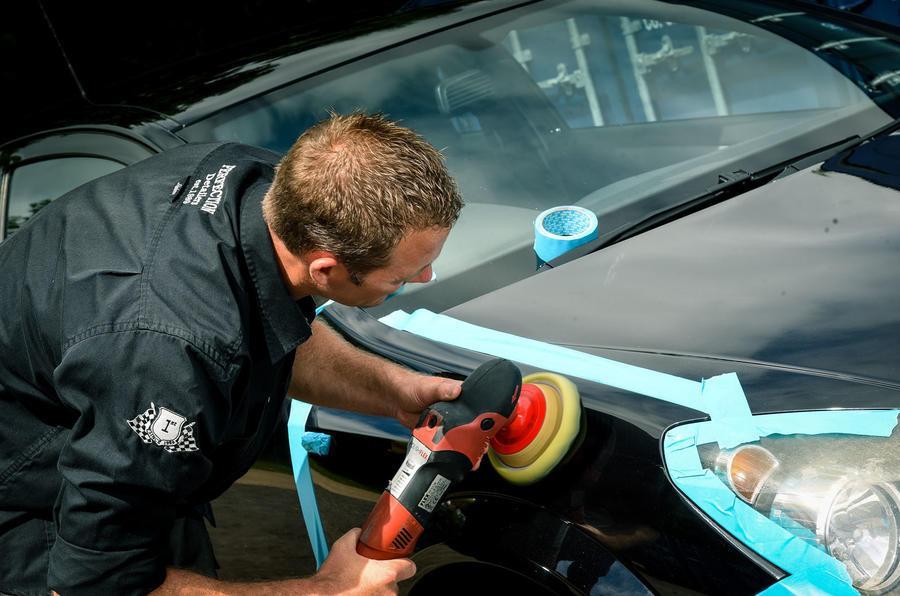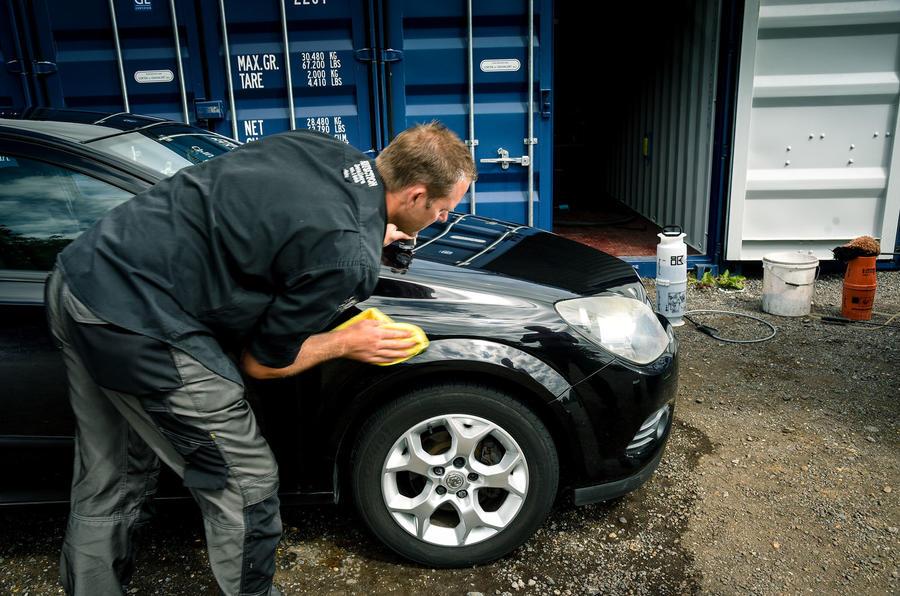Car detailing: 'Unlike valeting, this is personal'
You would not believe the lengths that professional detailers go to

Your support helps us to tell the story
From reproductive rights to climate change to Big Tech, The Independent is on the ground when the story is developing. Whether it's investigating the financials of Elon Musk's pro-Trump PAC or producing our latest documentary, 'The A Word', which shines a light on the American women fighting for reproductive rights, we know how important it is to parse out the facts from the messaging.
At such a critical moment in US history, we need reporters on the ground. Your donation allows us to keep sending journalists to speak to both sides of the story.
The Independent is trusted by Americans across the entire political spectrum. And unlike many other quality news outlets, we choose not to lock Americans out of our reporting and analysis with paywalls. We believe quality journalism should be available to everyone, paid for by those who can afford it.
Your support makes all the difference.For car detailer Richard Tipper the job is personal.
Tipper channels his love for a pristine machine by polishing posh cars for many hours until he can quite literally see his face in their shimmering panels. Four hours on one car is nothing out of the ordinary, but it can be much longer. A 1928 Bentley took six hours – and that was just the engine. A recent Ferrari F40 job lasted three days. His day rate is £650.
To some it will seem crazy, but car detailing is an art that’s as far removed from the car washing that the rest of us do as Lionel Messi is from a Sunday morning park kickabout. People like Tipper don’t just wash the wheels: they take them off and clean both sides. They don’t just polish the paint: they measure its thickness in microns and use lumps of what looks like blue modelling clay to get every last bit of grit out.

The tools of Tipper’s trade are a spotless Mercedes-Benz Vito van with a 500-litre water tank, a perfectly racked selection of cleaning products, and a Bosch coffee maker. Two attaché cases contain some pretty high-tech gear including a magnetic paint depth gauge that also tells Tipper what any car panel is made of, an ultrasound depth gauge displaying the number and depth of paint layers, and a special light that highlights any imperfections.
He puts the magnetic depth gauge onto our guinea pig, a 2006 Vauxhall Astra . It’s no surprise to find that a lot of the paint on the driver’s side is new, but what is surprising is Tipper’s comment that, given time, he could get rid of all the ‘orange peel’ effect that dulls not just this Astra but the appearance of many cars.
The magnetic gauge goes onto the rear door, indicating a paint depth of 120 microns. That’s a dead giveaway of a respray. Factory-spec depth on the front wing is 80 microns, of which around 20 microns will be the protective lacquer ‘clear coat’.

We’d waxed this car a few weeks earlier, but the bodywork still felt gritty to the touch. Removing these lumps from the masked-off wing was Tipper’s first job, using a clay bar and some soapy liquid to prevent dryout and drag. Two minutes later the wing feels as smooth as the proverbial baby’s bottom, but there’s more work yet. Tipper sprays the wing to sluice away any residual clay and then alcohol-wipes it. Polishing is next, using a small machine polisher with a light compound that won’t damage the Astra’s top coat. “The polish will be quite aggressive at first,” he says. “But as it heats up, it’ll turn to an oil and become finer.”
Given a free hand, Tipper would most likely carry on cleaning, polishing and sealing a car in the search for perfection, but he has gradually learned that this is an impossible goal in the time he has for any given job. “I’ve had to learn to step away, and if the customer says ‘that’s fine’, I have to accept that. But if ever I hear myself say ‘that’ll do’, I know I’ve not done my best.”
The seed was sown when Richard was a lad, and his self-employed vehicle mechanic father brought cars home for work. Tipper Junior would give them a clean. As his Dad’s fleet management business grew, so did Richard’s passion for primping cars. He set up his own company, Perfection Detailing, in 1989.

His big break came in 1997 when a customer asked him to sort out his F50. That led to word of mouth recommendations through the classic car community. Since then he’s worked on Nigel Mansell’s JPS Lotus 91 racer and most of the 24 Aston Martin Vulcans before customer handover.
Back in the real world, we ask Tipper if there is any hope for the Astra’s foggy headlight lenses. He applies some light cutting compound with the machine polisher, stopping frequently to let the lens cool down. Soon, we see something we haven't seen for a while: the light bulb. It’s an oddly exciting moment. Richard smiles a knowing smile. “Unlike valeting, detailing is personal. My customers become addicted to keeping their car just so.
“What drives me is the transformation I can make and seeing the pleasure my work gives my customers.”
How to 'detail' your own car
1 Spray the filthy bits with a multi-purpose cleaner and leave to soak.
2 Take off each wheel, spraying and cleaning the backs and the wheel hubs.
3 Wash the whole car with soapy water, rinsing and blow drying it until all the water is off.
4 Rub the whole surface with a clay bar, taking off any contaminants.
5 Clean off the residue and gently machine-polish the car with a fine cutting compound.
6 Wipe down and finish off with a wax or sealant to seal the surface.
Tony Middlehurst is a writer for AutoCar.
Join our commenting forum
Join thought-provoking conversations, follow other Independent readers and see their replies
Comments